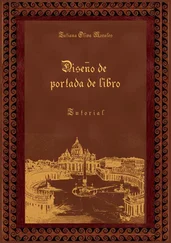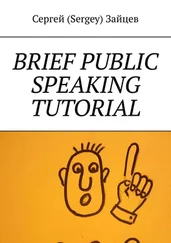Oskar Andreasson - Iptables Tutorial 1.2.2
Здесь есть возможность читать онлайн «Oskar Andreasson - Iptables Tutorial 1.2.2» весь текст электронной книги совершенно бесплатно (целиком полную версию без сокращений). В некоторых случаях можно слушать аудио, скачать через торрент в формате fb2 и присутствует краткое содержание. Жанр: Интернет, на русском языке. Описание произведения, (предисловие) а так же отзывы посетителей доступны на портале библиотеки ЛибКат.
- Название:Iptables Tutorial 1.2.2
- Автор:
- Жанр:
- Год:неизвестен
- ISBN:нет данных
- Рейтинг книги:4 / 5. Голосов: 1
-
Избранное:Добавить в избранное
- Отзывы:
-
Ваша оценка:
- 80
- 1
- 2
- 3
- 4
- 5
Iptables Tutorial 1.2.2: краткое содержание, описание и аннотация
Предлагаем к чтению аннотацию, описание, краткое содержание или предисловие (зависит от того, что написал сам автор книги «Iptables Tutorial 1.2.2»). Если вы не нашли необходимую информацию о книге — напишите в комментариях, мы постараемся отыскать её.
Iptables Tutorial 1.2.2 — читать онлайн бесплатно полную книгу (весь текст) целиком
Ниже представлен текст книги, разбитый по страницам. Система сохранения места последней прочитанной страницы, позволяет с удобством читать онлайн бесплатно книгу «Iptables Tutorial 1.2.2», без необходимости каждый раз заново искать на чём Вы остановились. Поставьте закладку, и сможете в любой момент перейти на страницу, на которой закончили чтение.
Интервал:
Закладка:
Important!A lot of times when you read an RFC, you might run into some old proven problems. The RFC 2960 - Stream Control Transmission Protocol document is one example of this, where they specifically specify that the Chunk flags should always be set to 0 and ignored unless used for something. This is written all over the place, and it begs for problems in the future. If you do firewalling or routing, watch out very carefully for this, since specifications for fields like this may change in the future and hence break at your firewall without any legit reason. This happened before with the implementation of ECN in the IP headers for example. See more in the IP headers section of this chapter.
Chunk Length- bit 16-31. This is the chunk length calculated in bytes. It includes all headers, including the chunk type, chunk flags, chunk length and chunk value. If there is no chunk value, the chunk length will be set to 4 (bytes).
Chunk Value- bit 32-n. This is specific to each chunk and may contain more flags and data pertaining to the chunk type. Sometimes it might be empty, in which case the chunk length will be set to 4.
SCTP ABORT chunk
The ABORT chunk is used to abort an association as previously described in the Shutdown and abort section of this chapter. ABORT is issued upon unrecoverable errors in the association such as bad headers or data.
Type - bit 0-7. Always set to 6 for this chunk type.
Reserved - bit 8-14. Reserved for future chunk flags but not used as of writing this. See the SCTP Common and generic headers for more information about the chunk flags field.
T-bit - bit 15. If this bit is set to 0, the sender had a TCB associated with this packet that it has destroyed. If the sender had no TCB the T-bit should be set to 1.
Length - bit 16-31. Sets the length of the chunk in bytes including error causes.
SCTP COOKIE ACK chunk

The COOKIE ACK chunk is used during the initialization of the connection and never anywhere else in the connection. It must precede all DATA and SACK chunks but may be sent in the same packet as the first of these packets.
Type- bit 0-7. Always set to 11 for this type.
Chunk flags - bit 8-15. Not used so far. Should always be set to 0 according to RFC 2960 - Stream Control Transmission Protocol . You should always watch out for this kind of specific behaviour stated by RFC's since it might change in the future, and hence break your firewalls etc. Just the same as happened with IP and ECN. See the SCTP Common and generic headers section for more information.
Length- bit 16-31. Should always be 4 (bytes) for this chunk.
SCTP COOKIE ECHO chunk

The COOKIE ECHO chunk is used during the initialization of the SCTP connection by the initiating party to reply to the cookie sent by the responding party in the State cookie field in the INIT ACK packet. It may be sent together with DATA chunks in the same packet, but must precede the DATA chunks in such case.
Type - bit 0-7. The chunk type is always set to 10 for this chunk.
Chunk flags - bit 8-15. This field is not used today. The RFC specifies that the flags should always be set to 0, but this might cause trouble as can be seen in the SCTP Common and generic headers section above, specifically the Chunk flags explanation.
Length - bit 16-31. Specifies the length of the chunk, including type, chunk flags, length and cookie fields in bytes.
Cookie - bit 32-n. This field contains the cookie as sent in the previous INIT ACK chunk. It must be the exact same as the cookie sent by the responding party for the other end to actually open the connection. The RFC 2960 - Stream Control Transmission Protocol specifies that the cookie should be as small as possible to insure interoperability, which is very vague and doesn't say much.
SCTP DATA chunk

DATA chunks are used to send actual data through the stream and have rather complex headers in some ways, but not really worse than TCP headers in general. Each DATA chunk may be part of a different stream, since each SCTP connection can handle several different streams.
Type- bit 0-7. The Type field should always be set to 0 for DATA chunks.
Reserved- bit 8-12. Not used today. Might be applicable for change. See SCTP Common and generic headers for more information.
U-bit- bit 13. The U-bit is used to indicate if this is an unordered DATA chunk. If it is, the Stream Sequence Number must be ignored by the receiving host and send it on to the upper layer without delay or tries to re-order the DATA chunks.
B-bit- bit 14. The B-bit is used to indicate the beginning of a fragmented DATA chunk. If this bit is set and the E (ending) bit is not set, it indicates that this is the first fragment of a chunk that has been fragmented into several DATA chunks.
E-bit- bit 15. The E-bit is used to indicate the ending of a fragmented DATA chunk. If this flag is set on a chunk, it signals to the SCTP receiver that it can start reassembling the fragments and pass them on to the upper layer. If a packet has both the BE-bits set to set to 0, it signals that the chunk is a middle part of a fragmented chunk. If both BE-bits are set to 1 it signals that the packet is unfragmented and requires no reassembly et cetera.
Length- bit 16-31. The length of the whole DATA chunk calculated in bytes,including the chunk type field and on until the end of the chunk.
TSN- bit 32-63. The Transmission Sequence Number (TSN) is sent in the DATA chunk, and the receiving host uses the TSN to acknowledge that the chunk got through properly by replying with a SACK chunk. This is an overall value for the whole SCTP association.
Stream Identifier- bit 64-79. The Stream Identifier is sent along with the DATA chunk to identify which stream the DATA chunk is associated with. This is used since SCTP can transport several streams within a single association.
Stream Sequence Number- bit 80-95. This is the sequence number of the chunk for the specific stream identified by the Stream Identifier. This sequence number is specific for each stream identifier. If a chunk has been fragmented, the Stream Sequence Number must be the same for all fragments of the original chunk.
Payload Protocol Identifier- bit 96-127. This value is filled in by the upper layers, or applications using the SCTP protocol as a way to identify to each other the content of the DATA chunk. The field must always be sent, including in fragments since routers and firewalls, et cetera, on the way might need the information. If the value was set to 0, the value was not set by the upper layers.
User data- bit 128-n. This is the actual data that the chunk is transporting. It can be of variable length, ending on an even octet. It is the data in the stream as specified by the stream sequence number n in the stream S.
SCTP ERROR chunk

Интервал:
Закладка:
Похожие книги на «Iptables Tutorial 1.2.2»
Представляем Вашему вниманию похожие книги на «Iptables Tutorial 1.2.2» списком для выбора. Мы отобрали схожую по названию и смыслу литературу в надежде предоставить читателям больше вариантов отыскать новые, интересные, ещё непрочитанные произведения.
Обсуждение, отзывы о книге «Iptables Tutorial 1.2.2» и просто собственные мнения читателей. Оставьте ваши комментарии, напишите, что Вы думаете о произведении, его смысле или главных героях. Укажите что конкретно понравилось, а что нет, и почему Вы так считаете.








